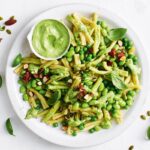Embark on a culinary adventure exploring the vibrant world of vegetarian curries! This guide unveils a collection of delectable recipes, from classic Chana Masala to regional variations showcasing diverse flavors and aromatic spice blends. Learn the secrets to achieving perfectly textured curries, master the art of creating custom spice mixes, and discover the versatility of vegetables in elevating these flavorful dishes. Prepare to tantalize your taste buds and transform your dinner routine with these exciting recipes.
We’ll journey through a curated selection of top vegetarian curry recipes, each offering a unique flavor profile and regional flair. Detailed step-by-step instructions for Chana Masala will guide you through the process, ensuring a delicious outcome every time. We’ll also explore the fascinating world of regional variations, highlighting the distinct ingredients and techniques that make each curry special. Finally, we’ll delve into the crucial role of spices, providing you with recipes for creating your own custom blends to perfectly complement your culinary creations.
Top 5 Vegetarian Curry Recipes
Aromatic, vibrant, and bursting with flavor, vegetarian curries offer a delightful culinary journey. These dishes showcase the incredible versatility of vegetables, transformed into richly satisfying meals through the magic of spices and cooking techniques. From mild and creamy to fiery and intense, there’s a vegetarian curry to tantalize every palate. Below, we explore five popular recipes, highlighting their key ingredients and flavor profiles.
Five Popular Vegetarian Curry Recipes
These five recipes represent a diverse range of flavors and regional influences, demonstrating the breadth and depth of vegetarian curry cuisine. Each recipe offers a unique sensory experience, from the gentle warmth of the Saag Paneer to the fiery kick of the Chana Masala.
| Recipe Name | Main Ingredients | Spice Level | Region of Origin |
|---|---|---|---|
| Saag Paneer | Spinach, paneer (Indian cheese), onions, garlic, ginger, garam masala | Mild | India (Punjab region) |
| Chana Masala | Chickpeas, onions, tomatoes, ginger, garlic, cumin, coriander, chili powder | Medium | India (North India) |
| Dal Makhani | Black lentils, kidney beans, butter, cream, onions, garlic, ginger, spices | Mild | India (Punjab region) |
| Vegetable Korma | Mixed vegetables (e.g., cauliflower, peas, carrots, potatoes), coconut milk, yogurt, nuts, spices | Mild | India (Mughlai cuisine) |
| Aloo Gobi | Potatoes, cauliflower, onions, tomatoes, ginger, garlic, turmeric, cumin, coriander | Mild to Medium | India (Punjab region) |
Flavor Profiles of the Curries
The Saag Paneer offers a creamy, earthy flavor profile, with the richness of the paneer cheese complementing the spinach’s subtle bitterness. Imagine vibrant green spinach, delicately wilted, embracing soft, melting cubes of paneer, all enveloped in a fragrant, spiced sauce. The Chana Masala, in contrast, provides a hearty, tangy experience, with the chickpeas offering a satisfying texture against the complex blend of spices. Picture plump chickpeas, coated in a vibrant, reddish-orange sauce, their flavor intensified by the warm embrace of cumin and coriander. Dal Makhani presents a luxuriously smooth and creamy texture, its rich, buttery flavor enhanced by the slow cooking process. Visualize a deep, dark brown lentil stew, its surface shimmering with a hint of cream, the aroma promising warmth and comfort. The Vegetable Korma boasts a mild, nutty, and subtly sweet flavor, with the coconut milk lending a creamy texture. Envision a colorful medley of vegetables bathed in a creamy, ivory-colored sauce, the nuts adding a delightful crunch. Finally, Aloo Gobi offers a balanced flavor profile, with the potatoes and cauliflower providing a comforting base, accented by the warming spices. Picture tender potatoes and cauliflower florets, their surfaces delicately browned, immersed in a fragrant, golden-hued sauce.
Vegetarian Curry Ingredient Spotlight
The vibrant tapestry of vegetarian curries relies heavily on the diverse array of vegetables that contribute both flavor and nutritional depth. From the subtle sweetness of carrots to the fiery bite of chilies, each vegetable plays a crucial role in crafting a unique and satisfying culinary experience. Understanding how different vegetables interact within the curry’s complex flavor profile is key to creating truly exceptional dishes. This exploration will illuminate the versatility of vegetables in vegetarian curries, showcasing their individual contributions to taste and texture.
Different vegetables offer contrasting textures and flavors, enriching the overall sensory experience of a vegetarian curry. The soft melt-in-your-mouth texture of potatoes contrasts beautifully with the firm bite of cauliflower florets, while the sweetness of butternut squash complements the spiciness of green chilies. Furthermore, the addition of leafy greens like spinach adds a vibrant green hue and a fresh, earthy note, balancing the richness of the coconut milk or other creamy elements. The careful selection and combination of vegetables are essential for achieving a well-rounded and harmonious flavor profile.
Common Vegetables in Vegetarian Curries and Their Nutritional Benefits
A wide range of vegetables finds its way into the heart of delicious vegetarian curries, each contributing not only to the taste and texture but also to the nutritional value of the dish. The following list highlights some common choices and their associated health benefits, emphasizing the abundance of vitamins, minerals, and antioxidants found in these culinary staples.
- Potatoes: A good source of potassium, vitamin C, and fiber, potatoes provide a creamy texture and a slightly sweet flavor to curries. Their starchiness helps thicken the sauce.
- Carrots: Rich in beta-carotene (converted to vitamin A), carrots add sweetness and a vibrant orange hue. They contribute to the overall visual appeal and provide antioxidants.
- Cauliflower: A good source of vitamin C and fiber, cauliflower offers a mild, slightly sweet flavor and a firm texture that holds up well during cooking. Its subtle taste allows it to blend seamlessly with other, bolder flavors.
- Spinach: Packed with iron, vitamin A, and vitamin K, spinach adds a deep green color and a slightly earthy taste. It wilts down beautifully, contributing to the overall richness of the curry.
- Green beans: A good source of vitamin K and fiber, green beans retain their shape well during cooking, offering a pleasant textural contrast to softer vegetables. Their slightly sweet flavor adds complexity.
- Peas: A source of protein and fiber, peas add a burst of sweetness and a vibrant green color. Their small size makes them a delightful textural element.
- Onions: Onions form the aromatic base of many curries, adding a pungent, savory flavor and a pleasing sharpness that cuts through the richness of the sauce. They also contain antioxidants.
- Garlic: Garlic adds a powerful pungent aroma and flavor, complementing the spices and other vegetables. It also boasts antimicrobial properties.
- Tomatoes: Tomatoes provide acidity and sweetness, balancing the spiciness of the curry. They are a good source of lycopene, a powerful antioxidant.
- Butternut Squash: This sweet and creamy squash adds a rich, earthy flavor and a beautiful orange color. It’s a good source of vitamin A and fiber.
- Green Chilies: While adding a fiery kick, green chilies also provide vitamin C and antioxidants. They contribute a vibrant green color and a lively, spicy element.
Spice Blends and Their Impact on Flavor

The art of vegetarian curry lies not only in the vegetables themselves but also in the carefully crafted spice blends that elevate their natural flavors. A well-balanced spice blend can transform a simple dish into a culinary masterpiece, creating a symphony of aromas and tastes that tantalize the palate. The following recipes offer three distinct spice blend profiles – mild, medium, and spicy – each designed to complement the richness of vegetarian ingredients. Precise measurements are key to achieving consistent results, allowing you to reproduce these delicious blends time and again.
Mild Spice Blend: A Gentle Introduction to Flavor
This blend offers a subtle warmth and complexity, perfect for those new to the world of Indian spices or for dishes where a delicate flavor profile is desired. The gentle heat allows the natural sweetness of the vegetables to shine through.
- 1 tablespoon coriander seeds
- 1 teaspoon cumin seeds
- ½ teaspoon turmeric powder
- ¼ teaspoon cardamom powder
- Pinch of ground cloves
- Pinch of ground nutmeg
To prepare, dry roast the coriander and cumin seeds in a dry pan over medium heat until fragrant (approximately 2-3 minutes). Allow to cool completely, then grind to a fine powder using a mortar and pestle or spice grinder. Gently combine with the remaining spices in a small bowl. The coriander provides a warm, citrusy base, while cumin adds an earthy depth. Turmeric lends its characteristic golden hue and subtle bitterness, while cardamom, cloves, and nutmeg contribute layers of sweetness and warmth.
Medium Spice Blend: A Balanced and Vibrant Profile
This blend strikes a harmonious balance between warmth and spice, offering a more assertive flavor that complements a wider range of vegetables. The inclusion of chili powder provides a gentle kick, while the other spices work together to create a complex and satisfying taste.
- 1 tablespoon coriander seeds
- 1 tablespoon cumin seeds
- 1 teaspoon turmeric powder
- ½ teaspoon chili powder
- ½ teaspoon cardamom powder
- ¼ teaspoon black peppercorns
- Pinch of cayenne pepper (optional)
The preparation mirrors the mild blend: dry roast the coriander and cumin seeds until fragrant, cool, and then grind to a fine powder. Combine with the remaining spices. The addition of chili powder introduces a pleasant heat, while black pepper adds a subtle pungency. Cayenne pepper, if used, will intensify the heat further. This blend is versatile and pairs well with both creamy and drier curries.
Spicy Spice Blend: A Fiery Fusion of Flavors
This blend is for those who appreciate a bold and fiery curry. The generous amount of chili powder and the inclusion of other warming spices create a complex heat that lingers on the palate. Use this blend sparingly, as it packs a serious punch.
- 1 tablespoon coriander seeds
- 1 tablespoon cumin seeds
- 1 teaspoon turmeric powder
- 1 tablespoon chili powder
- ½ teaspoon mustard seeds
- ½ teaspoon fennel seeds
- ¼ teaspoon ginger powder
- A generous pinch of cayenne pepper
Again, dry roast the coriander and cumin seeds, cool, and grind. Combine with the remaining spices. The mustard and fennel seeds add a unique piquancy and subtle licorice note. Ginger powder adds a subtle warmth and earthiness. The generous amount of chili powder and cayenne pepper creates a truly fiery experience, making this blend ideal for adventurous palates. A small amount goes a long way.
From the comforting warmth of a classic Chana Masala to the exotic spice notes of regional variations, the world of vegetarian curries offers endless possibilities for culinary exploration. This guide has equipped you with the knowledge and recipes to create flavorful and satisfying vegetarian curries that will transform your dinner table. Experiment with different vegetables, spice blends, and regional techniques to discover your own signature curry creations. Enjoy the journey of flavor and the satisfaction of crafting delicious, healthy, and memorable meals.
Questions Often Asked
Can I substitute ingredients in these recipes?
Yes, many ingredients can be substituted based on your preferences and dietary needs. However, be mindful that substitutions may alter the final flavor and texture of the dish.
How long do these curries keep in the refrigerator?
Most vegetarian curries will keep in the refrigerator for 3-4 days in an airtight container. Allow them to cool completely before storing.
Can I freeze vegetarian curries?
Yes, vegetarian curries freeze well. Allow them to cool completely, then portion them into freezer-safe containers or bags. They can typically be stored frozen for 2-3 months.
What type of pot is best for making curry?
A heavy-bottomed pot, such as a Dutch oven or a stainless steel pot, is ideal for making curry as it distributes heat evenly and prevents sticking.


